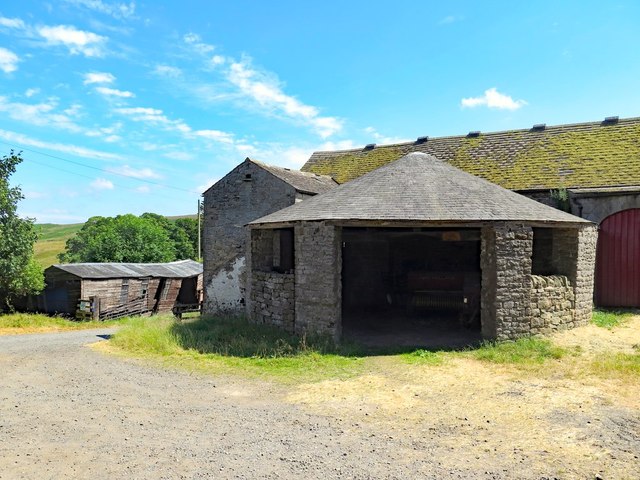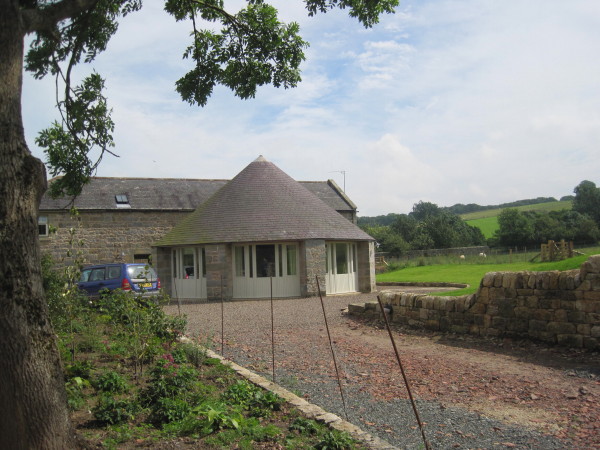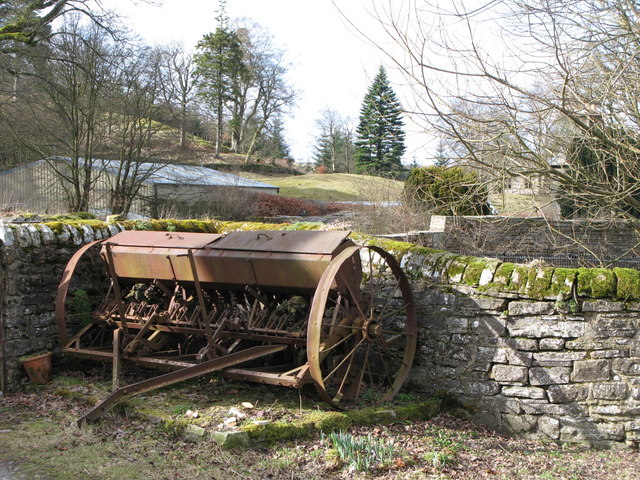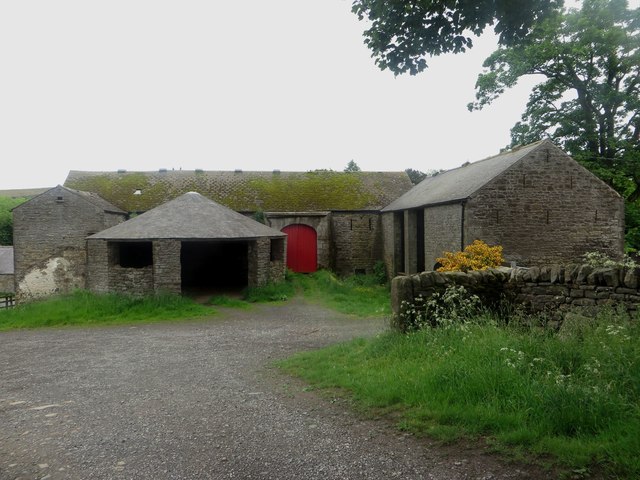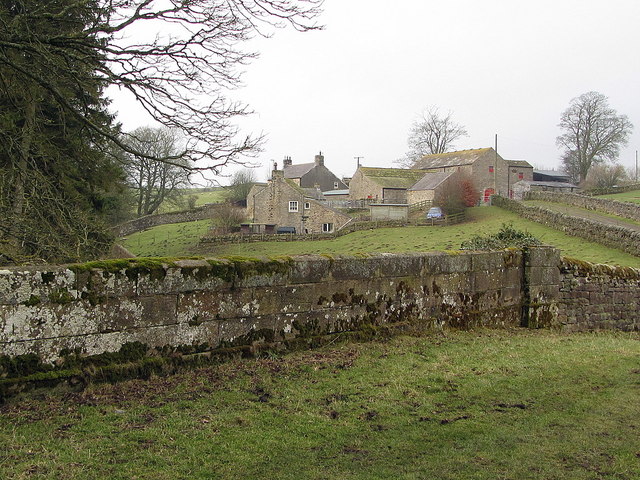Farm buildings, Broomhouse

-
Description
"Buildings include a circular gin-gang with rectangular piers, partly-infilled openings and conical Welsh slate roof. The early to mid 18th century buildings are Grade II Listed (List entry Number: 1045291) https://www.historicengland.org.uk/listing/the-list/list-entry/1045291 The gin (short for "engine") was a horse mill driving a small threshing machine, and the horse did the gang, or going. The gin-gang was always attached to the main threshing barn, where the gin was situated. It was almost always of one storey and it could be circular, polygonal or square. There was a hole for a drive−shaft or drive−belt, linking it with the threshing barn. The gin was connected by cogs to a vertical spindle. The spindle was connected to a horizontal arrangement including a shaft attached to a horse, which turned the spindle and powered the machine by ganging or walking round and round the cogs and vertical spindle inside the walls of the gin gang. This arrangement was necessary in locations where there was no power for a water wheel. https://en.wikipedia.org/wiki/Gin_gang The inside of the gin-gang roof is shown here [[5840924]]" Photo by Andrew Curtis, 2018. -
Owner
Andrew Curtis -
Source
Geograph (Geograph) -
License
What does this mean? Creative Commons License
-
Further information
Link: http://www.geograph.org.uk/photo/5840918
Resource type: Image
Added by: Simon Cotterill
Last modified: 5 years, 8 months ago
Viewed: 527 times
Picture Taken: 2018-07-11 -
Co-Curate tags
